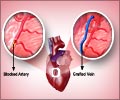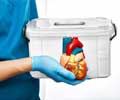- What Is Coronary Heart Disease? - (http://www.nhlbi.nih.gov/health/health-topics/topics/cad)
- Coronary Artery Disease - (https://medlineplus.gov/coronaryarterydisease.html)
- How Does Smoking Affect the Heart and Blood Vessels? - (https://www.nhlbi.nih.gov/health/health-topics/topics/smo)
- Overview - Coronary Artery Disease - (http://www.mayoclinic.org/diseases-conditions/coronary-artery-disease/home/ovc-20165305)
- Coronary Artery Disease - Coronary Heart Disease - (http://www.heart.org/heartorg/conditions/more/myheartandstrokenews/coronary-artery-disease---coronary-heart-disease_ucm_436416_article.jsp#.v-6ajrqyfdk)
- Informed Health Online [Internet]. Cologne, Germany: Institute for Quality and Efficiency in Health Care (IQWiG); 2006-. Coronary artery disease: Overview. 2013 Feb 13 [Updated 2013 Feb 26].
- Grech ED. Pathophysiology and investigation of coronary artery disease. BMJ: British Medical Journal. 2003;326(7397):1027-1030.
- Skelly AC, Hashimoto R, Buckley DI, Brodt ED, Noelck N, Totten AM, Lindner JR, Fu R, McDonagh M. Noninvasive Testing for Coronary Artery Disease. Comparative Effectiveness Review No. 171. (Prepared by the Pacific Northwest Evidence-based Practice Center under Contract No. 290-2012-00014-I.) AHRQ Publication No. 16-EHC011-EF. Rockville, MD: Agency for Healthcare Research and Quality; March 2016.
- Jousilahti P et al. Sex, age, cardiovascular risk factors, and coronary heart disease. Circulation. 1999;99(9):1165-1172.
- Hall SL, Lorenc T. Secondary prevention of coronary artery disease. Am Fam Physician. 2010;81(3):289-296.
- McCullough PA. Coronary Artery Disease. CJASN. 2007; 2(3):611-616.
What is Coronary Heart Disease (CHD) / Coronary Artery Disease (CAD)?
Coronary heart disease is a condition that arises due to blocks in blood vessels supplying the heart muscle. It is a heart condition where the arteries become narrow due to waxy deposits of plaque (a condition called atherosclerosis).
Arteries are blood vessels that supply blood from the heart to different organs and tissues of the body. The coronary arteries supply oxygen to the heart muscle.
Depending on how narrow the arteries are and how long they have been narrow, the heart can suffer from complications like failure of the right or left side of the heart, abnormal heart rhythms, dysfunctional heart valves, or a heart attack if the arteries are completely blocked.
According to the World Health Organization (WHO) 7.4 million people were estimated to have died from CHD in 2012.

What are the Causes of Coronary Heart Disease?
Coronary heart disease (CHD) is the result of the buildup of plaque in the coronary arteries. Plaque is caused when fat deposits, cells, and other material lodge themselves in the walls of the arteries during inflammation. These plaque deposits continue to build up over time.
The deposits cause the coronary arteries to become narrow and reduce the amount of blood that reaches the heart muscle. Plaques may harden and then eventually rupture.
Blood clots form on the surface of ruptured plaques and further narrow the arteries and reduce blood flow to the heart muscle. The part of the heart muscle that does not get oxygen can die resulting in a heart attack.
Damage to the heart muscle can result in problems in the pumping action of the heart i.e. heart failure or abnormalities in heart rhythm i.e. arrhythmia.

What are the Symptoms of Coronary Heart Disease?
Some people do not exhibit any signs of CHD; this is called as silent CHD which can cause sudden death.
Some people suffer from angina attacks. Others may directly experience symptoms of a heart attack, heart failure, or arrhythmia (irregularity in heartbeat).
The symptoms of angina include the following:
- Chest pain that cause tightness in the chest, which eventually spreads to the abdomen, back, neck, arms, and jaw
- Stable angina occurs during physical activity or emotional stress. It resolves once the physical activity is stopped
- Unstable angina may occur when the individual is just resting
The symptoms of a heart attack are as follows:
- Chest pain that does not reduce with rest
- Constant fatigue
- Feeling out of breath
- Vomiting, nausea, giddiness, sweating when feeling cold
- Discomfort similar to indigestion
- Sleep issues
The symptoms and signs of congestive heart failure are as follows:
- Fatigue
- Feeling out of breath
- Swollen feet or ankles
- Prominent veins in the neck
The symptoms of arrhythmia are as follows:
- Abrupt halt in the heartbeat (sudden cardiac arrest) – causes death if not treated immediately
- Heart feels like it is fluttering in the chest.

What are the Risk Factors of Coronary Heart Disease?
Some risk factors associated with coronary heart disease cannot be changed. These include male gender, older age and hereditary factors.
Other risk factors include:
- Smoking
- Unhealthy diet
- Lack of physical activity
- Elevated blood pressure / hypertension
- Abnormalities in lipids with an increase in LDL or bad cholesterol and a decrease in HDL or good cholesterol
- Obesity
- Diabetes
- High level of C reactive protein which indicates inflammation
- Presence of sleep apnea, where the patient has breathing pauses while sleeping
- Stress
- Excessive alcohol intake

How Do You Diagnose Coronary Heart Disease?
The diagnosis of CHD involves looking for changes in blood vessel walls, evidence of injury to the heart muscle and impaired functioning of the heart muscle.
Coronary heart disease is diagnosed by obtaining a medical history, and conducting a physical examination and tests that include:
- Resting electrocardiogram (ECG), which measures the electrical activity of the heart
- Cardiac Stress Test: ECG of the heart is taken during and after the patient has exercised for some time or after the intake of a medication that makes your heart beat faster
- Echocardiography, which evaluates the structure and function of the heart
- Coronary angiography, which is an invasive test that detects any block in the coronary blood vessels
- Blood tests to measure the blood levels of cardiac troponins, which are increased in patients with a heart attack. Blood tests are also done to check for risk factors of coronary heart diseases like high cholesterol and glucose levels
- Chest x-ray, to detect changes in the heart or lungs

Other tests that may also be performed include the following:
- Exercise/pharmacologic cardiac nuclear imaging with single-photon emission computed tomography (SPECT) or positron emission tomography (PET)
- Exercise/pharmacologic stress echocardiography (ECG)
- Computed tomography (CT)
- Doppler ultrasound-derived flow reserve measurements
- Pharmacologic stress magnetic resonance imaging (MRI)
- Coronary artery calcium scoring (CACS)
- Coronary computed tomographic angiography (CCTA)
How Do You Treat Coronary Heart Disease?
Treatment of coronary heart disease includes the following:
- Lifestyle changes (e.g. stop smoking, adopt dietary modifications especially reduce fat intake and avoid alcohol, exercise regularly, reduce stress)
- Medications (e.g. antiplatelet medications, lipid-reducing drugs, antianginal medications, medications for hypertension and diabetes, clot-dissolving drugs)
- Cardiac angioplasty (which widens narrow arteries)
- Coronary artery bypass surgery (which creates an alternate route for blood flow when there are many blood vessels that have become narrow)

Health tips
Pursue a healthy lifestyle of exercise, eat a well-balanced diet, maintain a normal weight, and avoid habits such as smoking, to reduce the risk of getting coronary heart disease.














